Speakers and Experts at WLHF – 2018

Dr. Amareswar Galla
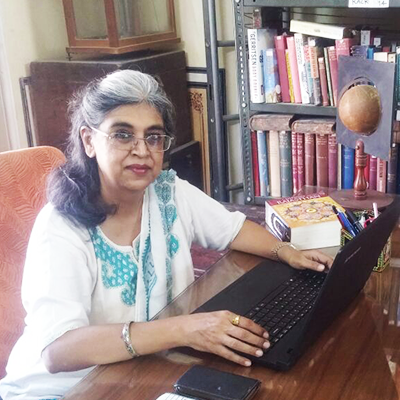


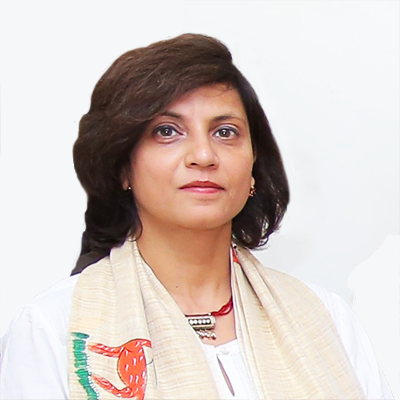
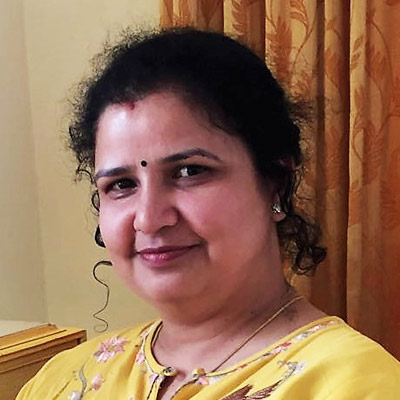
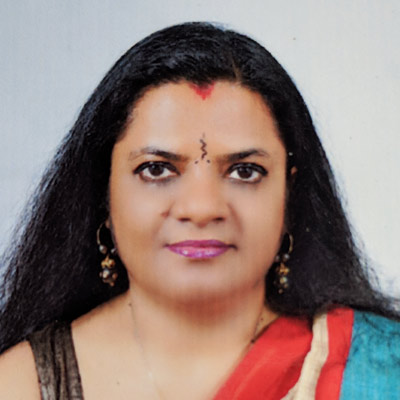
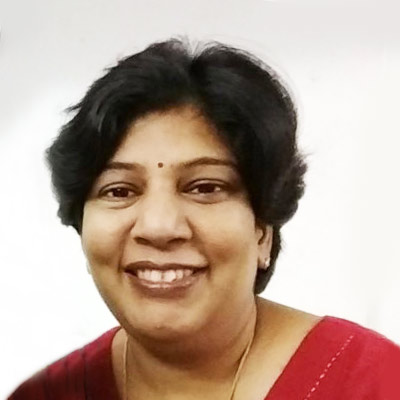
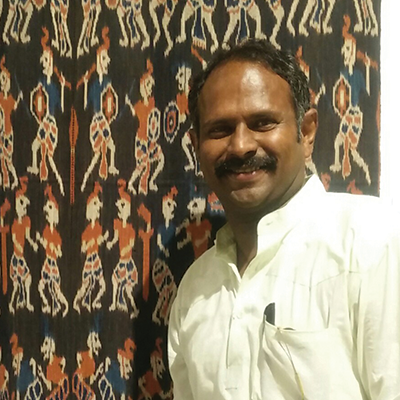
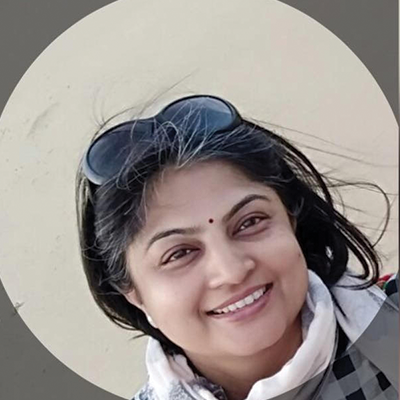
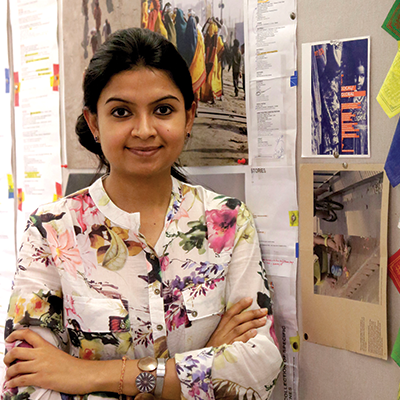
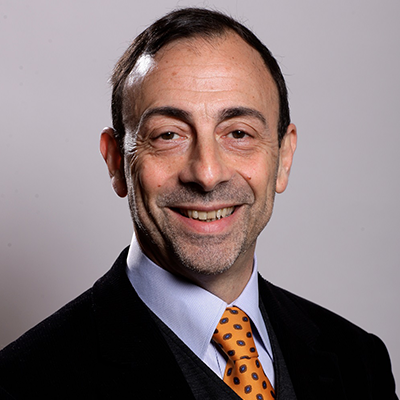
Mr. Frédéric Bouilleux
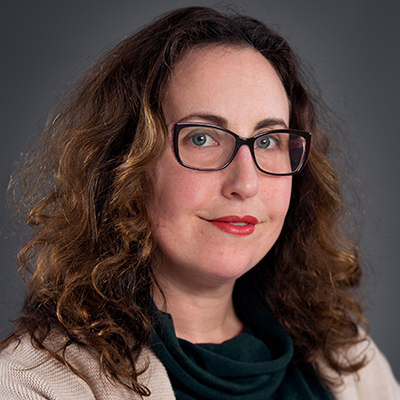
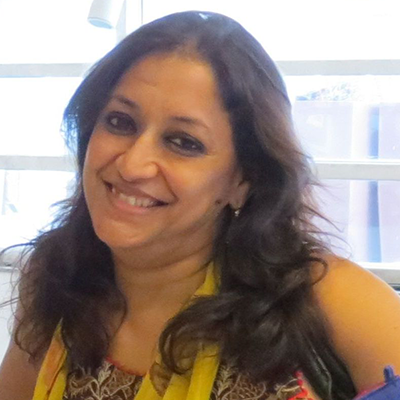

Mr. Eric Falt
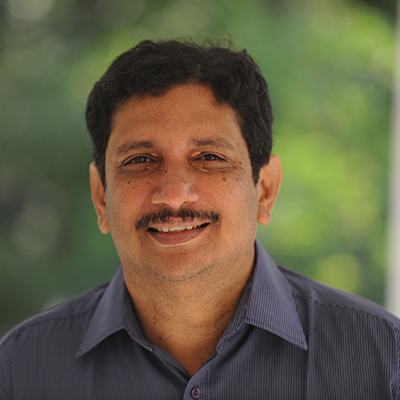
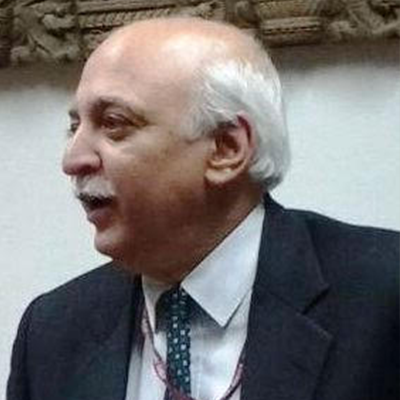
Mr. Vinaysheel Oberoi
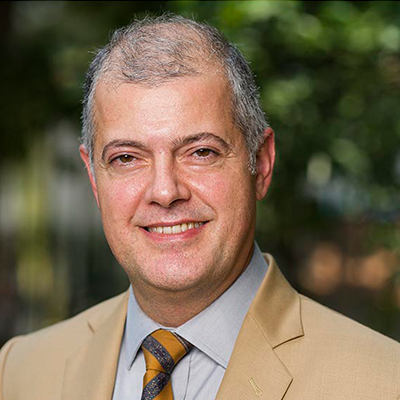
Dr. Bertrand de Hartingh
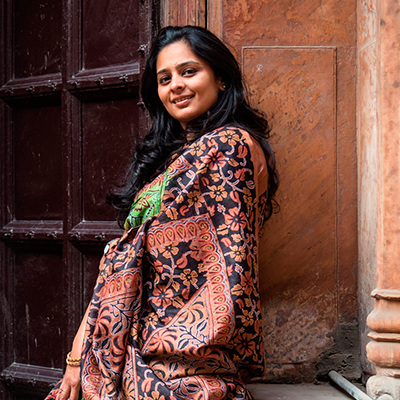
Ms. Aishwarya Tipnis
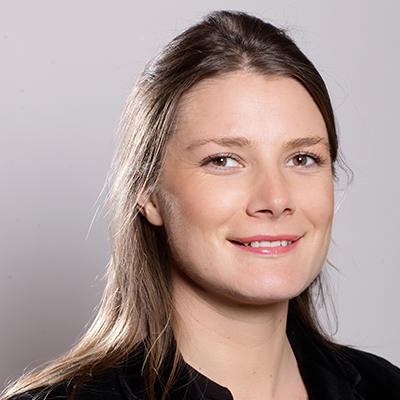
Ms. Cécilie de Saint-Venant
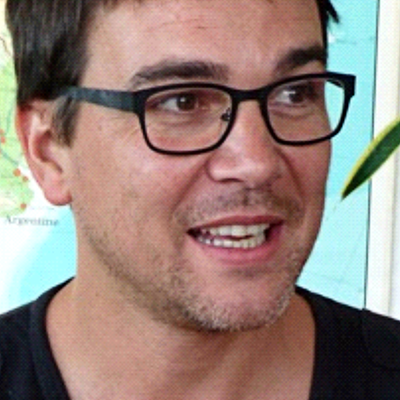
Dr. Nicolas Bautès
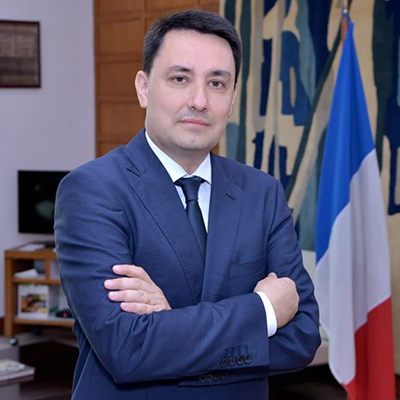
Mr. Alexandre Ziegler
Prof. S. N. Balagangadhara
S. N. Balagangadhara is Professor Emeritus, University of Ghent, Belgium. During his academic career spanning over four decades, S. N. Balagangadhara, fondly known as Balu, has created and developed a radically new framework for the study of cultures – the research programme Comparative Science of Cultures. He set up a department under the same name at Ghent University and was also Director of the India Platform at UGhent until his retirement recently. Balu also held the co-chair of the Hinduism unit in the American Academy of Religion between 2004 and 2007. He has published extensively in English, Dutch, and Kannada, and his work is seen as a seminal departure from the established framework in social sciences. His research programme Comparative science of cultures arises from the fundamental question: "What makes a difference between human beings, any difference, into a cultural difference, rather than a social, psychological, biological ... difference?" Investigating the nature of cultural difference, Balu has raised several other, important questions regarding the nature of colonialism and the post-colonial project, the nature of Indian traditions and Indian culture, and the phenomenon that is religion. His work poses a formidable challenge to the dominant narrative about India and opens up routes for enquiry that could lead to a new understanding of non-Western cultures.
Balu is actively engaged in public debate and has spoken/written on issues of national and international import in TV interviews, radio shows, and newspaper columns in India and Belgium. Over the years he has shared his ideas with a wide variety of audiences, from academics and intellectuals all over the world to village communities across Karnataka. Balu’s ideas resonate with such disparate audiences, ranging from urban European to rural Indian, because they do something very fundamental – they help people make sense of their everyday experiences – including experiences of their own heritage and culture. Balu’s ideas are rooted in decades of research, a deep understanding of religion and cultures as phenomena in the world, and his personal experiences in pursuing happiness. Apart from his books “The Heathen in his Blindness..." Asia, the West, and the Dynamic of Religion, Reconceptualizing India Studies, and, Do All Road Lead to Jerusalem?: The Making of Indian Religions, Balu has written extensively on several subjects, including Indian traditions, Itihasa, and the role of stories in Indian culture.
Balu will be present at the 4th World Living Heritage Festival 2018 as keynote speaker. His address will focus on the role of stories in Indian culture, Itihasa – what it is and its role in our lives, and, the nature and importance of tradition in Asian societies.
Relevant readings:
- “How to Speak for the Indian Traditions?” Lecture, Contesting Religion and Religions Contested: The Study of Religion in a Global Context, Special meeting of the American Academy of Religion, Atlanta, Georgia, USA, 21-22 November. Invited. https://www.academia.edu/4214100/How_to_Speak_for_the_Indian_Traditions
- “What do Indians Need, A History or the Past? A challenge or two to Indian historians”, VII Maulana Abul Kalam Azad Memorial Lecture, Indian Council of Historical Research, New Delhi, India, 11 November 2014. Invited. http://ichr.ac.in/maulana.pdf
Relevant websites:
- www.hipkapi.com – website bringing together the available writings of Prof. Balagangadhara and his students.
- http://research.flw.ugent.be/en/rcvc - website of the Research Centre Vergelijkende Cultuurwetenschap (Research Centre Comparative Science of Cultures) at University of Ghent
Prof. D. Venkat Rao
D. Venkat Rao teaches at the English and Foreign Languages University, Hyderabad. He studied at Kakatiya University, Warangal, and at University of Kent at Canterbury, UK. He did Postdoctoral researches at University of Chicago, University of California, Berkeley, and University of Washington, Seattle. In addition to books in English and Telugu he has published several articles in national and international journals. His recent work is Critical Humanities from India: Contexts, Issues, Futures (Routledge, 2018), and his other publications include Cultures of Memory in South Asia (Springer, 2014), In Citations: Readings in Area Studies of Culture (1999), a translation of Ashis Nandy’s The Intimate Enemy into Telugu (2005). Earlier he translated into English a Telugu intellectual autobiography called The Last Brahmin (2007, 2012, 2017). His areas of interest include literary and cultural studies, image studies, epic traditions, visual cultures, comparative thought, translation, and mnemocultures. He has designed several courses interfacing areas of culture, technology and literary and cultural studies.
Sri. K. P. Umapathy Acharya
Sri. K. P. Umapathy Acharya was born in 1957, studied Silpa Sastras and other ancient texts and obtained traditional training on temple architecture and iconography from his father. He hails from a family of eminent Vedic and Silpa Sastra scholars and architects–sculptors; His grandfather and father are both geniuses in the field of temple architecture and his father's research work on Vedas and Silpa Sastra is widely admired by scholars.
Along with his brother, Sri. Umapathy Acharya has completed major temple projects in Maharashtra, Andhra Pradesh, and Tamil Nadu. He has also published two rare texts on the philosophy of architecture and Ratha, namely “Silpa Vidya Rahasyopanishad” and “Rathalakṣaṇam.” Sri. Umapathy Acharya has participated in national and international seminars and presented about 75 research papers on Hindu architecture, iconography, and traditional technology. He has received the best traditional artist award from Govt. of Tamil Nadu and Shanta Prasad Award from Craft Council of India. He was honoured with the title of “Abinava Sarva Siddhi Acharya” by Gurushree Manochary Prathistan, Badami Sri. Acharya is deeply committed to sharing and transfer of the Indian knowledge system. He teaches Vedas and Silpa sastras, and practical intricacies of traditional temple architecture to young students. Recently he has taken up the responsibility of Director of “TVS Silpa Vidya Gurukulam” at Kumbakonam, which is run by TVS Motors Ltd. The Gurukulam is a unique institution for traditional architecture and allied arts.
In the formal academic system, Sri. Acharya has a master’s degree in political science.
Mr. M. S. Chaitra
M. S. Chaitra started his academic life as an Ecologist and Molecular Geneticist after attaining a Masters in Zoology. He spent many years working with Wildlife Institute of India (WII), Dehradun, Center for Cellular and Molecular Biology (CCMB), Hyderabad and at Center for Ecological Sciences (CES), Indian Institute of Science (IISc), Bangalore. His research involved studying genetics, behaviour and ecology of different organisms in India with a special focus on the Western Ghats. His work in the sciences has been widely published in both national and international journals. After his Doctoral work (yet to be awarded), for the past seven years his focus has been on studying Indian traditions. Currently Director of Aarohi Research Foundation, a registered not-for-profit organisation based in Bangalore, Chaitra coordinates a group of young PhD students who are involved in developing a scientific hypothesis on Indian traditions. His present work is part of a large international group which is studying India under the guidance of Dr S. N. Balagangadhara.
Most of Chaitra’s current research revolves around how to make sense of the experiences of ordinary Indians. Having grown up in a village in Karnataka, Chaitra has a rich personal background of ritual life and performances around rituals. As part of a family that has a traditional role in the running of his village temple, he is also closely involved with temple management in his village. In addition, Chaitra is also a performer of Gamaka and Bayalata (performative traditions).
With this resource pool of experiences, Chaitra’s research makes an attempt to look at the temple, performative traditions and role of stories in Indian society. Besides his academic work, Chaitra, along with his students, is actively engaged in public debates and his writings are regularly published in Sanchaya, Prajavani, Kannada Prabha, Vijaya Vani, Vijaya Karnataka, Hosa Diganta, Nilume, Aseema, DailyO and other publications. He has also given several lectures and public talks on the issues related to performance, the temple and stories.
Prof. Dr. Amareswar Galla
Professor Dr. Amareswar Galla is the Chief Curator, Amaravathi Heritage Town, AP., India & Founding Executive Director, International Institute for the Inclusive Museum, Denmark/ US/Australia (director@inclusivemuseum.org) (http://inclusivemuseum.org/director/) (http://onmuseums.com/). He was the former Vice President, International Executive Council of ICOM, Paris and a former President of ICOM Asia Pacific Executive Board. He is an active ICOMOS member who was directly engaged in drafting the Nara Recommendation in 1994. He founded the inclusive museum movement two decades ago and Chaired the drafting and adoption of the ICOM Cultural Diversity Charter in Shanghai in 2010. An alumnus of the Jawaharlal Nehru University, New Delhi, he was formerly full Professor of Museum Studies, University of Queensland and prior to that full Professor of Sustainable Heritage Development, the Australian National University. An accredited mentor/trainer of UNESCO for the 2003 ICH Convention. His extensive publication record ranges from World Heritage: Benefits Beyond Borders, Cambridge University Press & UNESCO Publishing, 2012 (French and Korean translations 2013), to Heritage Curricula and Cultural Diversity, Prime Minister & Cabinet, Australia, 1993.
Mr. Willem Derde
Willem Derde
Co-ordinator, Department of Comparative Science of Cultures, University of Ghent, Belgium
Willem Derde is coordinator of the department of comparative science of cultures at Ghent University, Belgium. He is also a member of the General Assembly of ICOMOS Flanders-Brussels (Belgium). In 2013 he was adopted as an expert member of the ICOMOS International Scientific Committee on Theory and Philosophy of Conservation and Restoration (ICOMOS Theory Committee). From 2014 until 2017 he was also a member of the Scientific Board of that committee.
His career as a heritage professional focuses on the interpretation of heritage and spans more than a decade. During that period, he took up several leading positions in national and international bodies. He is a former director of the Ename Centre for Public Archaeology and Heritage Presentation (Belgium) that played a pioneering role in developing techniques for on-site interpretation of archaeology by making use of virtual reality. The Ename Centre also played a crucial role in drafting the so-called ICOMOS Ename Charter on the Presentation and Interpretation of Cultural Heritage Sites.
At an international level he was invited as a visiting research associate of the Ironbridge International Institute for Cultural Heritage at Birmingham University (UK) and he served at Interpret Europe – the European Association for Heritage Interpretation – first as Managing Director and then as Chair of the Supervisory Committee until 2017. Interpret Europe is the first pan-European members organisation that promotes the importance of professional interpretation at both cultural and natural sites. In 2016 he organised the Interpret Europe international conference on “Heritage Interpretation for the Future of Europe” in collaboration with Herita, the Flemish Heritage Association.
Amongst other projects he was involved in, he coordinated the first modern interpretation of a beguinage in Kortrijk, Belgium. The beguines emerged as a spiritual movement of independent women in the 12th century across Western Europe. The tradition survived in Belgium until the end of the 20th century. The beguinages, including the one in Kortrijk, were declared UNESCO World Heritage in 1998.
He also coordinated a multi-annual project in the city of Ronse (Belgium) and developed recommendations for the integration of the city’s heritage as a driver for urban renewal. The Council of Europe picked up the project as an example of how to apply the principles of its Faro Framework Convention on the Value of Cultural Heritage for Society. Currently he focuses on the relationship between intangible cultural heritage and the urban and natural landscape as part of the preparation to present the ‘Fiertel’ of Ronse, an annual procession with a history of more than thousand years, for UNESCO recognition.
In Xi’an, China, he cooperated with the Han Yangling Museum on in situ presentation of archaeological excavations. He was also invited to develop a concept plan for an archaeological park featuring the remains of the palace of the first emperor of China. This site forms the central part of a city development project to the west of modern Xi’an. At the 19th General Assembly of ICOMOS international, which was organised in India for the first time, he took the initiative to set up a resolution addressing the partnership between the European Union and the Republic of India on smart and sustainable urbanisation. This partnership was one of the outcomes of the EU-India summit that took place October 2017. The resolution urges both parties to consider the preservation of heritage as a key element in the further development of cities in India.
His current research focuses on cultural differences between Europe and India both in the field of tangible and intangible heritage.
Join the Living Heritage Movement!
Become a partner in the Living Heritage Movement! Email us at wlhf@eternalmewar.in to know more about how you can sponser and collaborate in WLHF 2018!
Dr. Rima Hooja
Archaeologist, historian and writer, Dr. Rima Hooja is a former Member National Monuments Authority Govt of India. She is currently Director (Library, Archives & Research) Maharaja Sawai Man Singh II Museum, City Palace Jaipur; Member Central Advisory Board for Archaeology [CABA] Govt of India; Member Permanent Technical Advisory Committee Govt of Rajasthan; Trustee Jaipur Virasat Foundation; Editor Journal of Heritage Management; Visiting Professor School of Planning & Architecture Delhi; and Adjunct Faculty Ahmedabad University’s Centre for Heritage Management.
A Ph.D from Cambridge University, Distinguished International Academician of Minnesota University, and Fellow of the Royal Asiatic Society, she has been Director Minnesota University’s MSID India Program (2003-2014) & Faculty Director New York State Independent College Consortium for Study in India Program (November 2014-February 2016). She has held several academic posts and served on various governing boards, committees and councils.
Books by her include The Ahar Culture and Beyond (BAR Oxford 1988); Prince, Patriot, Parliamentarian (HarperCollins India 1997); Environment Degradation (Aalekh 1992); Crusader for Self-Rule (Rawat, 1999); Mandan’s ‘Devata-Murti-Prakarnam’ (Prakrit Bharat, 1999); A History of Rajasthan (Rupa & Co., 2006); Constructing Rajpootana-Rajasthan, (co-eds Rakesh Hooja and Rakshat Hooja), (Rawat 2009), Conserving Fortified Heritage (co-ed Shikha Jain), (Cambridge Scholars Press UK 2016), and Rajasthani Stories Retold (Niyogi Books, 2017). Her latest book is Rajasthan: A Concise History (Rupa & Co. 2018). Forthcoming books include a co-edited book on the ‘Forts of Maharashtra’, and a book on Maharana Pratap. She also has various research papers, newspaper articles and conference presentations to her credit.
Ms. Tripti Pandey
Tripti Pandey, is a well known name in the field of tourism and culture and in travel writing. Often termed as Rajasthan's Cultural Ambassador, she has been a pioneer in researching and presenting living heritage in creating international level festivals, exhibitions and books. Where Silence Sings, a book on Rajasthan's folk music and dance published by Harper Collins, Rajsthan's Silver Jewelry published by Rupa & co. and Pushkar - Colors of the Indian Mystique by Variety Books have been very well received. Pandey took to camera to illustrate her books, being on the locations that her books feature. For her book on Elephants in Indian culture, a subject close to her heart for years together, she consciously researched for last five years travelling across India to unfold the invaluable treasure around this much celebrated being. She is a recipient of many awards including the prestigious Gold Cross of the President of Austria and the Maharajah Bishen Singh Award of the Sawai Man Singh II Museum Trust, Jaipur.
Dr. Neel Kamal Chapagain
Neel Kamal Chapagain is an architect and heritage professional from Nepal, who is currently the Director of the Centre for Heritage Management at Ahmedabad University in India. He began his work at Ahmedabad University in developing a Masters Degree Programme in Heritage Management where the emphasis is on integrating tangible and intangible as well as natural and cultural heritage discourses and practices. He has been exploring the idea of living heritage, and was participant of a few fora related to living heritage organized by ICCROM in past few years. Along with his regular academic and professional engagements, he also coordinates a publication series titled ‘Reflections on the Built Environment and Associated Practices’ from Nepal, of which two volumes have been published and third volume is in its final stage. Earlier he co-edited (with Kapila Silva) ‘Asian Heritage Management: Contexts, Concerns and Prospects’ (Routledge 2013). He has also been a Visiting Fellow at the UNESCO Category Centre for World Natural Heritage Management and Training for the Asia Pacific Region at Dehradun, India. He obtained his Ph.D. from University of Wisconsin-Milwaukee (USA), an Architecture Doctorate from University of Hawaii – Manoa (USA), and a Bachelors in Architecture from Tribhuvan University, Nepal.
Dr. Shikha Jain
Shikha Jain has vast experience in cultural heritage of India that ranges from steering conservation projects for various state governments in India to preparing conservation plans funded by international organizations such as the Getty Foundation, World Monuments Fund and advising the Archaeological Survey of India on World Heritage. She was responsible for nomination dossiers of Jantar Mantar, Jaipur and 6 Hill Forts of Rajasthan that were inscribed on the World Heritage List in 2010 and 2013. She represented India as a Cultural Heritage expert and steered all matters related to World Heritage as Member Secretary, Advisory Committee on World Heritage to the Ministry of Culture during India’s term in the World Heritage Committee from 2011-2015. As an international expert, she has advised the National Heritage Board, Singapore on the World Heritage Site of Singapore Botanic Gardens inscribed in 2015 and is currently involved as expert with nomination of MraukU, Myanmar.
As Director, DRONAH, she has lead more than 40 conservation and museum planning projects across India in last decade. She is the Principal Coordinator for Conservation of City Palace Museum, Udaipur for MMCF since 2004. She received National level HUDCO awards for 2 urban conservation projects from Jaipur in 2013. Her work on Heritage Management Plan of Jaipur is documented as Best Practice by the National Institute of Urban Affairs , Ministry of Urban Development in 2015 (http://citynet-ap.org/wp-content/uploads/2015/05/GP-IN4-HERITAGE.pdf) along with 2 award winning urban conservation projects under Urban Green Growth Best Practices (http://www.niua.org/projects/urban-green-growth-strategies-indian-cities).
She graduated in architecture from the School of Planning and Architecture (SPA), Delhi followed by a Masters in Architecture from the Kansas State University, USA. Her doctoral work on Havelis of Rajasthan from De Montfort University (PRASADA), Leicester, UK received the Research Award from IIA (Indian Institute of Architects) in 2004. She is Visiting Faculty for Urban Conservation in the Department of Urban Planning, School of Planning and Architecture, New Delhi and Visiting Fellow at the UNESCO Category 2 Centre at WII, Dehradun. She is a panel member of PRASADA, Society of South Asian Studies, UK. She has authored publications on cultural heritage and, is the Chief Editor of the refereed Journal ‘Context: Built, Living and Natural’ published by DRONAH.
She is the State Convener of INTACH Haryana Chapter and member of two National Committees under the Ministry of Culture and Ministry of Human Resource Development. She is a bureau member and Asia Pacific Regional Coordinator of the International Scientific Committee on Fortifications and Military Heritage ICOFORT, ICOMOS and National Scientific Counsellor for ICOMOS India.
Dr. Vandana Singh
Dr. Vandana Singh is a Conservator and Director of the Centre for Art Conservation and Research Experts (CARE), New Delhi. She obtained Doctorate and Masters in Conservation from National Museum Institute, New Delhi and M. Sc in Chemistry from Kanpur University. Her PhD thesis focused on the characterization of ancient archaeological Iron based artefacts from Gangetic Plains of India. She is recipient of many national and international awards including prestigious Getty International Program award and ‘Outtstanding Person in the field of Culture- in the areas of Scientific and Technological Principles of Conservation’ by Ministry of Culture, Government of India. Dr. Most recently, Vandana held the Indian Conservation Fellowship, supported by Andrew W. Mellon Foundation USA and the Ministry of Culture, India to study the conservation practices at The Metropolitan Museum of Art, New York, USA. Vandana is an Executive Committee Member and former Joint Secretary of IASC (Indian Association for the study of Conservation of Cultural Property), New Delhi. She is appointed as a Technical Expert Committee member for the conservation of art and architecture of Mysuru Palace by Mysuru Palace Board, Karnataka.
Dr. Vandana started her conservation career in 2008 from the Archives of National Academy of Arts, Ministry of Culture New Delhi. After that she did a series of national and International projects on metal conservation in India and abroad. She has also gained training from the IIC-International Training Center for Conservation, Beijing and Object Conservation Department, The MET, New York on the use and basics of operating different non-invasive imaging and analytical techniques in the conservation of cultural heritage. In 2013 she was engaged as a team member in the conservation of gilded metals at World Heritage site of Royal Palace, Patan, Lalitpur, Nepal and in 2015 served as a technical advisor for the cleaning of Gilded areas of Main Shrine of Golden Temple, Amritsar. She has also served the Conservation department of National Museum, New Delhi from 2014 to 2017.
She has researched and published widely on metallic heritage conservation, their scientific and technical aspects as well as traditional practices. Her current research has focused on the scientific analysis of both precious and non-precious metals to develop a deeper understanding of the history, craftsmanship, provenance, deterioration process and originality of objects using advanced material characterization techniques. Besides, she is exploring the impressive material culture of a native community- Sikligar, a traditional swordsmithing community of Rajasthan. Swordsmiths of Rajasthan have widely contributed to arms history of India and are known for their ability to make legendry swords since centuries. But their values and skills are dying its own death and hence their traditional wisdom are fast disappearing. Today, the challenge is to capture, maintain and pass on these traditional knowledge systems for future generations. Conservation and craft in a heritage context are complimentary skill sets that work to mutual advantage. The benefits of close partnership between disciplines, and how these might be facilitated and promoted is the present goal of Dr. Vandana’s work. She is making efforts to build awareness and enhance cultural strength of the country through activities such as conference presentations, publications and interactive workshops on traditional swordsmithing.
Selected Publications
-
Investigations of Structural, Chemical and Physical properties of natural lac and its reinforced composites . Sukhvir Singh, Vandana Singh and Ashish Kumar Gupta. 2018. Indian Journal of Pure & Applied Physics, 56 (2018) 69-75.
http://nopr.niscair.res.in/handle/123456789/43509 - Surface studies of a 2400-year old corrosion resistant ancient Indian Iron Artifact. Vandana Singh and Sukhvir Singh. Indian Journal of Chemical Technology,25 (2018)
- A study on environmental corrosion of gilded heritage structures of Royal Palace Patan, Nepal. Vandana Singh and Sukhvir Singh. Indian Journal of Pure & Applied Physics,55 (2017) 890-895. http://nopr.niscair.res.in/handle/123456789/43263
- Investigation of a traditional metal adhesive: A case study of lac-based resin used by traditional swordsmiths of India. Vandana Singh and Sukhvir Singh. ICOM-CC 18 th Triennial Conference Preprints, Ed. J. Bridgland. Copenhagen, Denmark, 2017,0806. 7pp
- Mercury-Amalgam Gilding of Nepal: A study on traditional materials and techniques. Vandana Singh and Sukhvir Singh. METAL-2016 Proceedings of the interim meeting of the ICOM-CC Metal Working Group, Eds. Raghu Menon, et.al. New Delhi, India, 2016, pp 47-52
- Linking Heritage Conservation with Cultural Revitalization. Vandana Singh. ICOM- CC 17 th Triennial Conference Preprints, Ed. J. Bridgland. Melbourne, Australia, 2014, 0906, 6pp
- Microstructural fingerprinting of Ancient Indian Iron and Steel using Variable Pressure Scanning Electron Microscopy (VPSEM). Vandana Singh. 2015. TECHNART 2015- Non-destructive and microanalytical techniques in art and cultural object. Catania, Italy, 2015, p2-115.
Ms. Sumedha Verma Ojha
Sumedha Verma Ojha was born in Patna, Bihar and educated in Delhi, graduating from Lady Sri Ram College in Economics and post graduating from the Delhi School of Economics in Sociology. She joined the Civil Services as an Indian Revenue Services officer and worked there until her passion for the past caught up with her. She moved to Switzerland, originally on a sabbatical, and pursued her study of Sanskrit, Prakrit and ancient Indian history. This resulted in a book series, “Urnabhih”; the first book was published by Roli Books in 2014 and the second is forthcoming. This is a book of historical fiction set in the Mauryan period.
During 2015 and 2016, she spent her time studying and working on the unmatchable illustrated Ramayan of Rana Jagat Singh of Mewar. The work of translating the Sanskrit Valmiki Ramayan, which was being illustrated in the ateliers of Mewar in the 17th century into a short and accessible form, morphed into an engagement with the paintings themselves, a life changing immersion. The collection of the paintings digitised by the British Library had the Aranya kand missing. It seemed ab initio impossible to publish a Ramayan without Seeta-Haran. Roli Books and Ms Ojha got together to persuade RORI, Jodhpur, to release at least a few paintings. They had refused to release any for the British Library digitisation. The Mewar Ramayan is richer for the Aranya Kaand paintings. Ms. Ojha works in the area of getting ancient Sanskrit and Prakrit literature to modern readers and presenting a gendered and contemporary understanding of India’s past through articles, columns and talks across the world especially Europe and the US.
Ms Ojha has two children and lives in Geneva with her husband. Her next book is non- fiction (history) on the women of ancient India.
Books Published:
Urnabhih (2014 Roli Books) The Ramayan (2016 Roli Books)
Forthcoming Books
Urnabhih Book 2 (2018) The ‘Modern’ Women of Ancient India (2018)
Forthcoming TV Series
‘Urnabhih’ (2018)
Links to selected writings/projects
-
Lecture on Trade Routes and Stories at IGNCA
http://ignca.gov.in/mausam/Mausam_lecture_20160524.mp3 -
Columnist on History
https://swarajyamag.com/author/17699/sumedha-verma-ojha -
Books
https://indianexpress.com/article/lifestyle/books/mewar-ramayana-sita-ram-manuscript-book-mythology-4366897/
http://rolibooks.com/the-finest-surviving-illustrated-manuscript-the-mewar-ramayana/
http://www.openthemagazine.com/article/books/love-sex-and-satraps
https://www.youtube.com/watch?v=kq0PRcYlxV8 -
Talks on the Mewar Ramayan at the Los Angeles Public Library
https://www.facebook.com/SumedhaVOjha/videos/238549239883703/ -
Talks on Gendered View of History, New York
https://www.facebook.com/Indicbookclub/videos/1897373203875838/
Ms. Smita Singh
Smita Singh is an Independent Textile Conservation Consultant; having a Master’s Degree in 'Conservation of Art Objects' from the National Museum Institute (NMI), New Delhi, India. She is UGC-NET qualified and has specialization in Conservation of Traditional Painted Textiles from British Museum London, UK. Currently, she is working on conservation project for the textile collection at MSMS II Museum, The City Palace Jaipur. She is also associated with MMCF, The City Palace Museum, Udaipur as a Textile Conservation Consultant, since 2014, for the documentation, conservation and storage of collection of The Royal Mewar Textiles. She is also a visiting faculty at the ‘National Museum Institute’. She has worked with many institutions and independently for over a decade and has specialization in the conservation and preservation of the textile objects, survey and documentation of textile collections, designing storage for the collections and establishment of the conservation laboratories.
Her 16 years of body of work includes of a long association with Indian National Trust for Art and Cultural Heritage (INTACH), New Delhi; National Research Laboratory for Conservation of Cultural Property (NRLC) Lucknow; The City Palace Udaipur; President House Museum, New Delhi; Mehrangarh Museum Trust, Jodhpur; School of Planning and Architecture, New Delhi, Gyan Museum, Jaipur and Srinivas Malliah Memorial Theatre Crafts Museum, New Delhi; which has the textile collection collected by Smt. Kamladevi Chattopadhyay. During her association with INTACH Art Conservation Centre as Senior Conservator/Centre Coordinator, she has executed numerous conservation projects and training programs. She has also established and headed the ‘Specialized Textile Conservation Unit’ INTACH, New Delhi, India in 2010.
She was a recipient of the Merit cum means scholarship NMI 2001, Nehru Trust Scholarship in 2004, ICCROM Bursary in 2008 and Charles Wallace India Trust (CWIT) scholarship in 2010, and Eurasia-Pacific UNINET scholarship to visit University of Applied Arts, Vienna for Indo-Austrian Workshop on Conservation of Textiles in 2014. She has written and presented various papers in National and International Conferences and was the editor of ‘Conservation Issues in Asia’ a conference proceeding of ARCC published in 2009. She is also a Founder member & Chief Editor of Textile and Clothing Research Centre ( TCRC) a society registered to promote textile research programs in India since 2015.
Mr. Robinson
An alumnus of St.Stephen's College, Delhi is a Theologian, Poet, Meditation Practitioner, Art Curator and Critic, Heritage Walks Curator primarily based in Delhi. He has been closely associated with various aspects of the art world encompassing Visual, Literary and Performing space. He was part of the Core team of International Sacred Arts Festival, Delhi and been a feature at numerous festivals including the World Sacred Spirit festival, Nagaur and the Pushkar festival, Pushkar. He has Conducted heritage walks in over 15 cities in India covering both the tangible and intangible aspects. He has curated some of the finest artists in the Contemporary art World including the noted Sculptor Ram Sutar ji. He regularly writes for Indian Creative Minds, Delhi and Indian Contemporary Art Journal, Mumbai regularly as an art critic apart from numerous catalogs for artists. He is also closely involved in transmission of the richness of our heritage through SPICMACAY to the youth of the Country and is also the Associate Editor of Sandesh, the official newsletter of it. He describes himself as a traveller in life who intends to journey well.
Dr. Toolika Gupta
Dr. Toolika Gupta, Director, Indian Institute of Crafts and Design, is a researcher and educator in the field of crafts and design. With a PhD in History of Arts (Dress and Textiles) from the University of Glasgow, UK; M.Sc. in Textiles and Clothing from Lady Irwin College, New Delhi, India; her association as a PhD fellow with the Centre for Textile Research, Copenhagen, Denmark and a short course in ‘Archeological Textiles’ from the University of Oxford, UK, she has amassed experience as a researcher in this field. She started her career as a designer in 1996, moving into education as a faculty member at NIFT, New Delhi from 2005. Her time spent at the National Institute of Fashion Technology, New Delhi, equipped her with the understanding of the need of the design education and its future in India. She resigned from NIFT in 2011 to pursue further research while being a visiting faculty at NIFT, NID and Pearl Academy. Realizing the need of promotion of indigenous research and bringing it closer to interested people, she along with many like-minded people, set up the TCRC, Textiles and Clothing Research Centre, New Delhi in 2016. She is currently also the secretary of TCRC. Her views and articles can be read at her blog www.costumetextilesandfashion.blogspot.com. She has written and co-edited research papers and books, some of her research papers can be read on https://glasgow.academia.edu/ToolikaGupta, she has also written articles for newspapers, magazines and for www.fiber2fashion.com. She is committed to uplifting and promoting crafts and design research in India.
Ms. Deshna Mehta
Deshna Mehta is a visual artist with a passion for photography, design, writing and curation. A graduate of Sir J.J Institute of Applied Art, followed by a masters in Graphic design from the London College of Communication and a masters in Visual Communication from the Royal College of Art in London, she moved back to India seeking to find meaning within her own design practice. This led to the inception of Studio Anugraha (http://studioanugraha.com/) that serves as a platform to encourage and undertake collaborative practices in the field of visual art, design and research. It derives from and contributes to elusive aspects of cultures, philosophies and ideas in general. By experimenting with and incorporating patterns and paradigms to express the intangible, it weaves a dynamic fabric of awareness leaving insiders and onlookers with a sense of connect. The intention is to communicate, elevate and inspire. 'At Anugraha, we’d be delighted to work on anything apart from luxury brands and things that promote consumerism in general. Our focus therefore tends to be on the educational, social, cultural, environmental and medical sectors.'
Deshna anchors the Kumbh Mela project documentation and design, working alongside a large team of people engaged in the initiative. (http://thekumbhmelaexperience.com/) She, along with her team have documented the Kumbh of Allahabad 2013, Nashik-Trimabkeshwar 2015 and Ujjain 2016. The engagement spans field work, photography, content structures, writing, editorial roles, book design, production and publishing. This endeavour, backed by patrons has led to an 8 volume compendium on the Allahabad Kumbh along with a 55 minute documentary that has been published. The Nashik and Ujjain documentation is soon to be published in the form of books and a documentary that her studio has been working on for the past couple of years. Her team has had the opportunity to exhibit this body of work at various exhibits of the likes of the Goa International Photo Festival (2015),an official launch at The Nehru Centre, Mumbai (2015), a part of a pavilion at The 15th Venice Architecture Biennale (2016), part of a group show at NGMA Mumbai (2018). She has been invited to represent the project at the forthcoming Bursa Foto Festival in Turkey (September-October 2018)
Deshna currently teaches at the National Institute of Design as visiting faculty and has been a part of other teaching stints and juries at various design institutes in India. She has been invited to speak on various platforms within the country of the likes of Typography Day 2014 (Symbiosis School of Design, Pune), Cumulus 2015 (IDC,IIT Mumbai), DDS 2017 (IDC,IIT Mumbai). Aside of her interest in research, writing and design, Deshna enjoys exploring various philosophies and expressing them through installations which have been exhibited in the UK and in India across various galleries and festivals. She has also co-curated The Story of Light festival (2015) (http://www.thestoryoflight.org/) and the co-directed The Story of Space festival (2017) in Goa. (http://www.thestoryof.org/space2017/)
Mr. Frédéric Bouilleux
Since 28 August 2014, Frédéric Bouilleux has been the deputy managing director of the National Estate of Chambord. He had previously held several positions in the cultural services of French embassies abroad (Italy, Jerusalem). From August 2006 to August 2012, he served as French-language and cultural and linguistic diversity director at the Organisation Internationale de la Francophonie.
Dr. Deborah L. Stein
Dr. Deborah L. Stein holds a PhD from UC Berkeley. Currently Professor Stein teaches Art History at California College of Arts (CCA) and San Francisco State. She has designed and taught a wide range of courses on Asian Art, Architecture and Film at U. C. Berkeley, Mills College, U. C. Santa Cruz, U.C. Irvine and San Francisco State University. Prof. Stein's book manuscript, "The Hegemony of Heritage: Ritual and the Record in Stone," is based on her extensive research and a year of fieldwork in Southern Rajasthan, India. Dr. Stein has lectured internationally in English, French, and Hindi on Indian art and architecture topics including the contested politics of heritage management, diachronic approaches to Hindu temples in Mewar, corporeality in medieval Indian sculpture, and popular Indian cinema. Journal articles on Revivalism in 15th Century Mewar and Indo-Persian Polity in Malwa are in progress, along with new work on Chamunda. Deborah also has a strong curatorial background and has authored several peer-reviewed articles.
Ms. Shalini Dasgupta
Shalini Dasgupta is a Conservation Architect based in New Delhi and has been practicing for the last 24 years. Having studied architecture from CEPT, Ahmedabad and Conservation Studies from SPA, New Delhi, her firm, Heritage Conservation & Design Centre has been focusing on adaptive reuse and putting historic buildings to contemporary use. Currently she is actively involved in the urban conservation of the Braj region. She is an active ICOMOS member, the Co-ordinator of the National Scientific Committee on Documentation and Expert member of CIPA.
Mr. Eric Falt
On 24 May 2018, Eric Falt assumed the position of Director and UNESCO Representative for the UNESCO New Delhi Cluster Office covering Bangladesh, Bhutan, India, Nepal, the Maldives and Sri Lanka.
Prior to this assignment and since September 2010, he was based at UNESCO Headquarters in Paris as the Assistant Director-General for External Relations and Public Information, with the rank of Assistant Secretary-General of the UN. As such, he oversaw the work of the Organization in the political field, in particular relations with Member States, and coordinated activities geared towards civil society. He also guided UNESCO’s communications and public information efforts.
From 2007 to 2010, he served as Director of the Outreach Division at the United Nations Department of Public Information in New York.
From 2002 to 2007, Mr. Falt was simultaneously Director of Communications for the United Nations Environment Programme (UNEP), based at its headquarters in Nairobi, and Director of the United Nations Information Centre (UNIC) for Kenya and Uganda.
Throughout the 1990's and until 2002, he served in peacekeeping and humanitarian operations in Cambodia, Haiti and Iraq, and as Director of the UN Information Centre in Pakistan.
Before joining the United Nations, Eric Falt was posted for the French Ministry of Foreign Affairs in Chicago and in New York.
Mr. Benny Kuriakose
Benny started his career in 1984 and received the basic lessons in architecture under the tutelage of Laurie Baker. After receiving the Charles Wallace India Trust award for an M.A. in conservation studies at the University of York. He has received his doctorate from the Indian Institute of Technology, Madras.
Benny is known more for his work for the design of the public buildings and the transplantation of the buildings in the Kerala Section of the craft village known as Dakshinachitra in Chennai. Major architectural works include the Muziris Heritage Project, Institute of Palliative Medicine in Calicut, the design of the tsunami affected villages of Chinnangudi and Tarangmbadi in Nagapattinam District, the Springdale Heritage Resort in Vandiperiyar and the Anantya Resort in Kanyakumari Resort.
Benny has authored the book ‘Conserving Timber Structures in India’ and one of the editors for the book ‘Guidelines for the Preparation of a Heritage Management Plan’. He has offered his services as consultant to UNDP, UNESCO, various State Governments and other organizations.
Mr. Vinaysheel Oberoi
Mr Oberoi is a retired Secretary to the Government of India in the Union Ministries of Department of Higher Education Ministry of Human Resource Development as well as the Ministry of Women and Child Development. He is from the Assam - Meghalaya Cadre. He has also served as the Ambassador and Permanent Representative of India to UNESCO from 2010 to 2014. He is an avid photographer cataloguing Living Heritage of various communities through his lens.
Dr. Bertrand de Hartingh
Dr. Bertrand de Hartingh, Counsellor for Cooperation and Cultural Affairs and Country Director, French Institute in India. An alumnus of France’s most prestigious university (ENS Ulm, alma mater of many Nobel Prizes such as Jean-Paul Sartre) he got his Ph.D. from Paris Sorbonne University with the highest honors. Researcher, writer and diplomat, he has lived and worked in many American, European and Asian countries for various institutions (French Foreign Service, British DFID, World Bank, etc.). He speaks fluently 7 languages. He is currently the Counsellor for Cooperation and cultural Affairs - director of the French Institute in India at the French Embassy and the Head curator for the next edition of Bonjour India.
Ms. Aishwarya Tipnis
Aishwarya Tipnis is the principal architect of an eponymous architectural practice based in Delhi working on making the past relevant to the future though a diversity of projects on architectural and urban heritage conservation in India. An alumnus of the School of Planning & Architecture New Delhi, she has Master’s Degree in European Urban Conservation with distinction from the University of Dundee, Scotland in 2017. Aishwarya is the recipient of the highest civilian honour in the culture sector the insignia of Chevalier des Arts et des Lettres (Knight of the Arts and Letters), by the Government of France for her outstanding commitment to the preservation of French Heritage in West Bengal. She is also the recipient of the UNESCO Award for Heritage Conservation in the Asia-Pacific Region in 2016. She has authored a book on "Vernacular Traditions: Contemporary Architecture" as well as multiple articles on heritage conservation in leading dailies. She has been a consultant to UNESCO, Asian Development Bank, World Monuments Fund New York as well as Vielles Maisons de France, Embassy of France in India, Embassy of Kingdom of Netherlands in India. She is currently a visiting faculty to Department of Urban Design at the School of Planning & Architecture New Delhi.
Ms. Cécilie de Saint-Venant
Cécilie de Saint Venant is the communications, branding and sponsorship director of the National Estate of Chambord. She launched her career in the Association Française des Orchestres, where from 2008 to 2012, she was in charge of the “Orchestres en fête!” project. In 2017, Cécilie de Saint Venant won the national first prize as "woman of communication" awarded by Trophées des Femmes de l'Economie, a French organization celebrating woman entrepreneurs.
Dr. Nicolas Bautès
Dr. Nicolas Bautès, Research Fellow at the Department of Social Sciences of the French Institute of Pondicherry. Nicolas Bautès is working in the field of urban studies, social and political geography. On leave from his permanent position of senior lecturer at the University of Caen-Normandy (France), he is currently Research Fellow at the Department of Social Sciences of the French Institute of Pondicherry (UMIFRE 021 CNRS), India, where he conducts a research program about the politics of heritage in South India. He is working extensively on questions related to cities and heritage, both in Brazil and India, where he conducted a PhD entitled: "A taste for Heritage. Production processes of a tourist territory, Udaipur".
Mr. Alexandre Ziegler
Born on 8 September 1969, Alexandre Ziegler graduated from the Institute d’Etudes Politiques (Institute of Political Studies) and holds a degree in history (the prestigious “Agrégation”). He is an alumnus of the École Normale Supérieure as well as of the French National School of Administration (1995-1997). He is fluent in English and German and also has a working knowledge of the Chinese language.
In 1997, he was appointed to the permanent post of Secretary at the Ministry of Foreign Affairs, followed by a 4-year stint at the Strategic, Security and Disarmament Affairs Division of the same ministry (1997-2000). He served as Deputy Consul General in Hongkong (2000-2003), before being posted as First Secretary in Berlin (2003-2007). He was then appointed Counsellor for Culture and Cooperation in Beijing (2007-2010).
Thereafter, he was appointed Head of Programmes and Network at the Globalisation, Development, and Partnerships Division, Ministry of Foreign Affairs (2010-2012).
From 2013 to February 2016, he served as the Head of the Foreign Minister’s Political Office (Directeur de Cabinet / Chief of Staff to the Minister).


